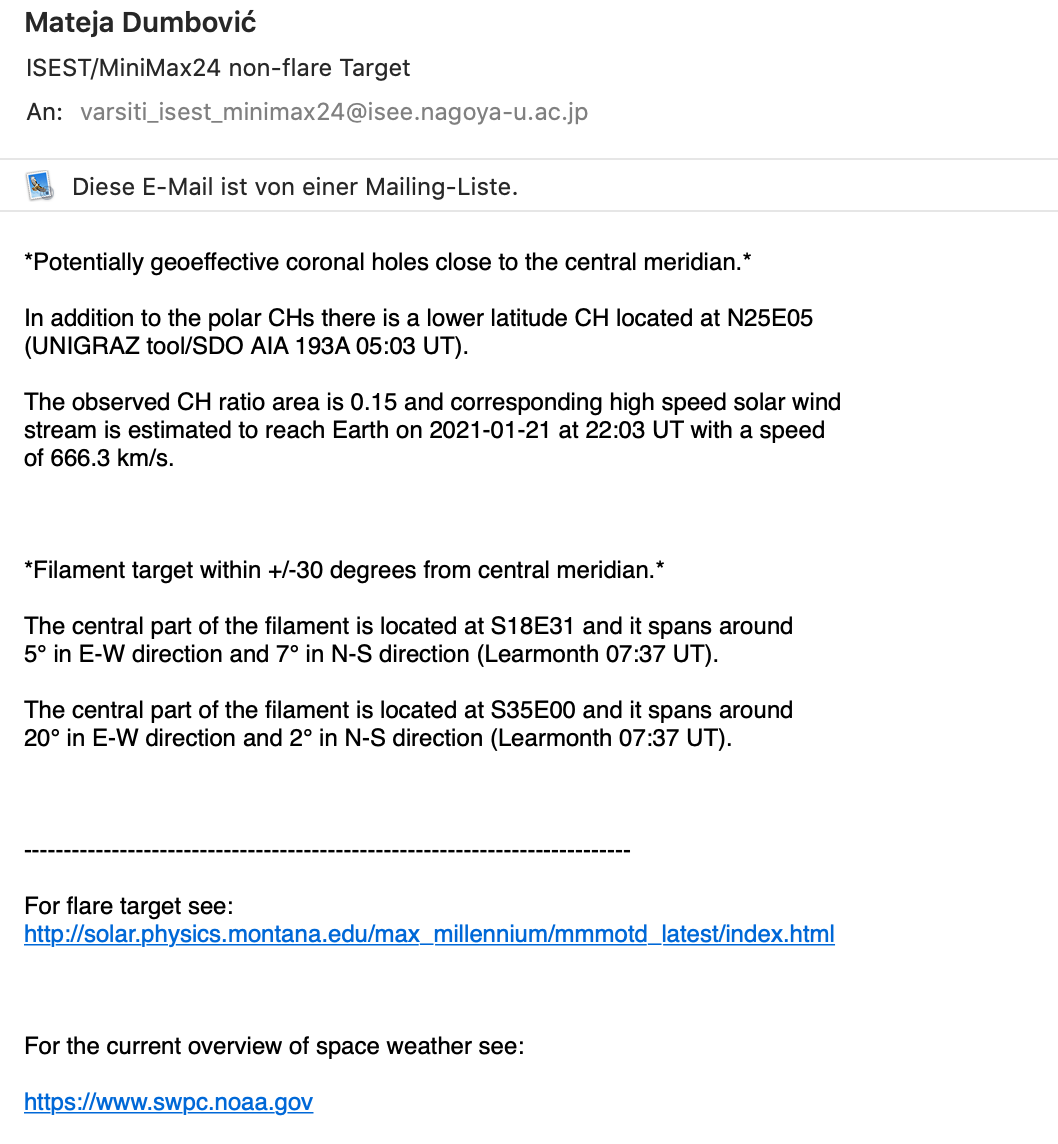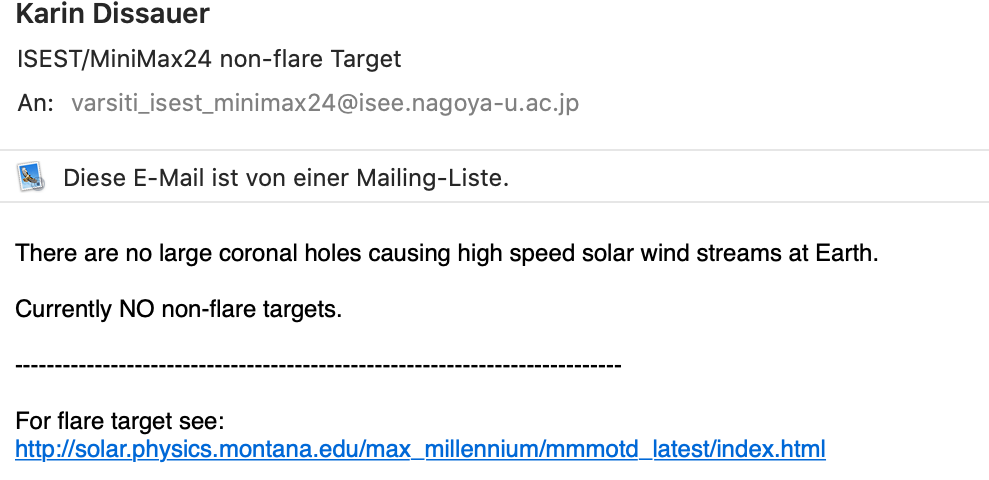Defining a non-flare target - manual for the Observer of today (OTD)
Introduction
The "non-flare target" Space Weather service was established under the SCOSTEP program VarSITI (2014-2018) and is maintained by University of Graz and University of Zagreb. The aim is to target and track coronal holes and filaments, in addition to M-class flares and higher (MFW or GFW) which is covered by other services.
i) Coronal holes (CHs): potentially geoeffective high speed solar wind streams emanate from
CHs that are big enough and close enough to the central meridian.
The solar wind speed at Earth, as calculated from CH areas very close to the
central meridian (+/-7.5 degrees), needs about 4 days to come to Earth.
ii) Filaments: CMEs are highly likely related to eruptions of filaments.
If criteria #1 or/and #2 listed below are met, define a non-flare target
Criterion #1. There is a CH located at within +/-7.5 degrees in longitude exceeding a ratio area of 0.2 (use UNIGRAZ tool).
Criterion #2. There is a filament located at within +/-30 degrees in longitude (H-alpha imagery).
- Coronal holes: check SDO AIA-193 images and evolution of CHs with
UNIGRAZ tool.
A CH is close to the central meridian if it extends into the oval (within +/-7.5 degrees of the central meridian) on that image.
Current value of "ratio area" (the ratio of CH area to total oval area)
click here. Alert is set to "YES" if the ratio area exceeds 0.2 or the speed forecast is above 550 km/s.
- Filaments: Use H-alpha imagery to detect filaments. Check solarmonitor.org or KSO for the most recent H-alpha image. !Nice tool - check movies from GONG: GONG movies.
KSO has an automatic detection for filaments: Check this out! In addition, KSO also provides an H-alpha movie of the last hour (restricted to weather conditions).
Filaments eligible for an alert should span >10 degrees and should be dark.
If the data are not actual (which is the case if neither BBSO nor KSO observes) go to GONG H-alpha Network
and download the fits file (symbol with the green arrow next to info button) =>
IDL>fits2map,'path',map; IDL> plot_map, map, grid=10; get coordinates. Note: fz files - unpack using funpack under UNIX
Choose only prominent filaments (dark and wide), e.g., exemplary filament.
Filaments detected at E30 will be tracked until W30, provided the filament did not erupt.
In case of filament eruption: check GONG movies and report the eruption time in the excel file!
Daily task of the OTD
Until 14UT write an email to varsiti_isest_minimax24@isee.nagoya-u.ac.jp
Subject: "ISEST/MiniMax25 non-flare Target"
If criteria #1 or/and #2 listed above are met, define a non-flare target by putting in the email the following information:
Text: "Potentially geoeffective coronal hole close to the central meridian".
Give rough CH coordinates (central point), ratio area, predicted solar wind speed/date.
"Filament target within +/-30 degrees from central meridian". Choose the most prominent filament(s) and provide center coordinates and time. Define whether it is small or large in extension.
If criteria #1 or/and #2 listed above are NOT met:
Text: "Currently NO non-flare targets, we go with the MM flare-target."
-------------------
Always put at the end of the email the following:
For flare target see:
http://solar.physics.montana.edu/max_millennium/mmmotd_latest/index.html
For the current overview of space weather see:
https://www.swpc.noaa.gov
To subscribe/unsubscribe your e-mail address visit:
https://portal.isee.nagoya-u.ac.jp:8443/mailman/listinfo/varsiti_isest_minimax24
-------------------
Put the target information also in the following document:
Target info and log file
Examples

----------------No non-flare target present at the Sun--------------

Revision 3: March 25, 2021 by mat
Revision 2: July 3, 2017 by mat
Revision 1: January 30, 2013 by mat

